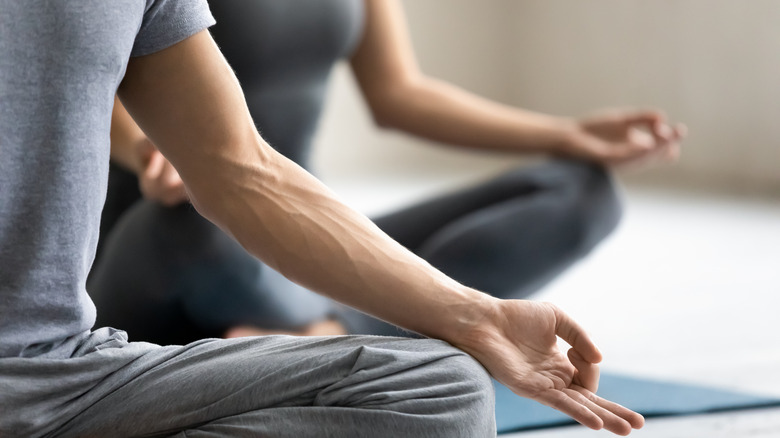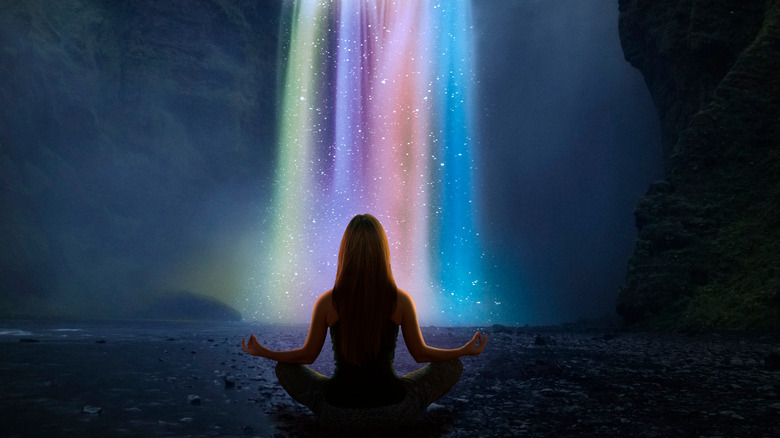What Is Silent Yoga?
Most yoga classes are meant to be a calm environment for soothing movement in an otherwise hectic life. However, that's not always how they turn out to be. Maybe you become overwhelmed by background noise, onlookers at the gym, or the traffic outside. Even worse, maybe you're worried about the people around you hearing you start to huff and puff as the moves get harder. Whatever the source, all that noise can knock you right out of your flow and make you want to roll up your mat for good.
But what if there was an alternative? What if there was an option where nobody could hear a single noise you made and you wouldn't be bothered by anything other than gentle murmured instructions or soft music? Would you enjoy fully immersing yourself in a darkened room with only soft mood lighting around you? If you're nodding yes, then silent yoga might be for you. Silent yoga has a range of benefits that other styles of yoga don't, such as improved focus, a sense of privacy, and even a sense of novelty as explained by Audio Vault Events, a company that provides silent yoga classes. It all comes down to how the classes are carried out.
How does silent yoga work?
Silent yoga is similar to the silent dance parties you may have seen on television or in movies. In a room full of people helmed by a DJ, all of them are dancing to music that nobody else can hear except for those wearing special headphones. That's because the music — or in the case of yoga, the instructor's guidance — is transmitted via shortwave radio to headphones handed out when attendees arrive.
This technique is most widely offered by Sound Off, a company that provides a wide variety of silent events. Each event has its own ambience and style, but they all use the distinctive LED-rimmed headphones.
For yoga classes, these events are either held in parks after sundown, or in darkened rooms lit with black lights and soft LEDs in soothing colors. The instructor utilizes a microphone that delivers instructions directly to each person's ear, which gives attendees the chance to close their eyes and focus solely on their own mat rather than straining to see or hear the teacher. Since it's unlikely that anyone else will be looking around either, this may encourage those who worry about being watched while exercising.
Silent yoga is considered a sensory-heavy experience and may not be for everyone. But for those who thrive on noise reduction and want to experience a heightened level of private reflection, silent yoga might be just what you need.


